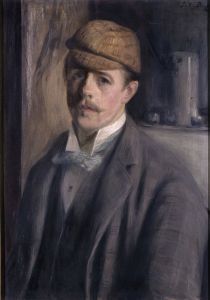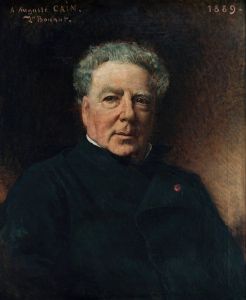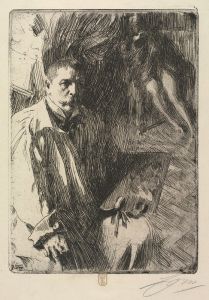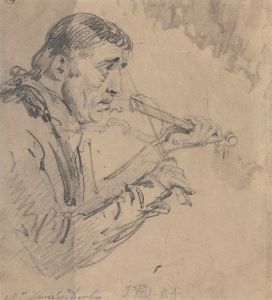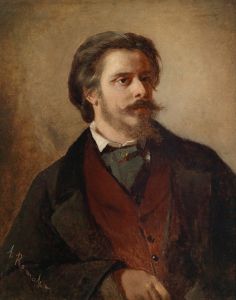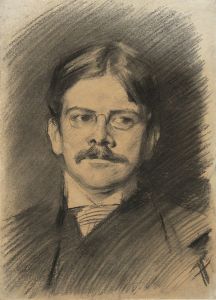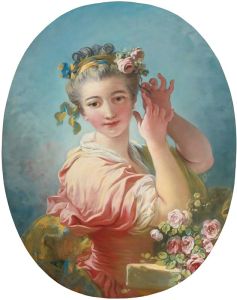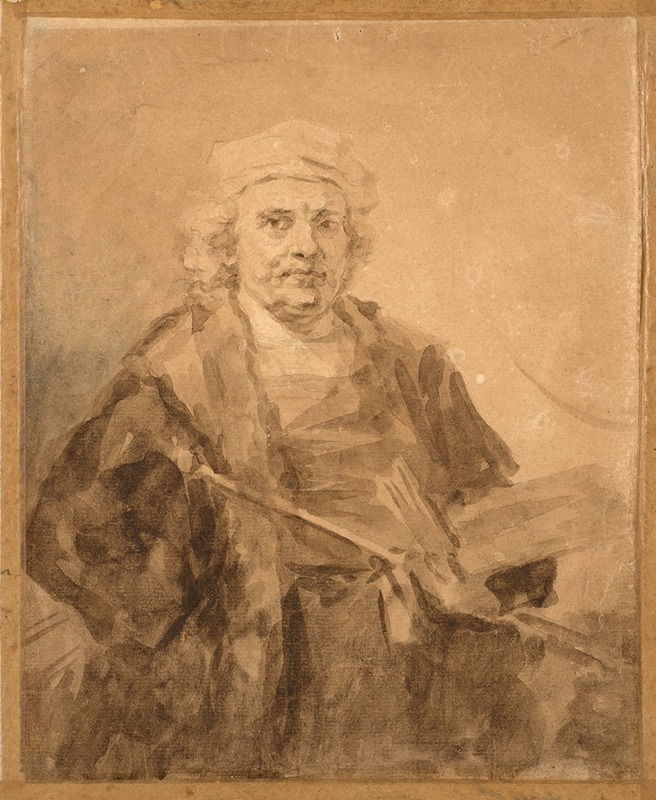
Portrait de Rembrandt à la palette
A hand-painted replica of Jean-Honoré Fragonard’s masterpiece Portrait de Rembrandt à la palette, meticulously crafted by professional artists to capture the true essence of the original. Each piece is created with museum-quality canvas and rare mineral pigments, carefully painted by experienced artists with delicate brushstrokes and rich, layered colors to perfectly recreate the texture of the original artwork. Unlike machine-printed reproductions, this hand-painted version brings the painting to life, infused with the artist’s emotions and skill in every stroke. Whether for personal collection or home decoration, it instantly elevates the artistic atmosphere of any space.
Jean-Honoré Fragonard, a prominent French Rococo painter, is celebrated for his exuberant and fluid style, which often depicted scenes of romance and playful elegance. Among his diverse body of work, "Portrait de Rembrandt à la palette" stands out as a notable piece, though detailed historical documentation about this specific painting is limited.
Fragonard was born in 1732 in Grasse, France, and he showed an early aptitude for art. He studied under François Boucher, one of the leading Rococo painters of the time, and later won the prestigious Prix de Rome, which allowed him to study in Italy. His time in Italy greatly influenced his style, as he absorbed the works of the Old Masters and the vibrant Italian landscape.
The painting "Portrait de Rembrandt à la palette" is an intriguing work that reflects Fragonard's admiration for the Dutch master Rembrandt van Rijn. Rembrandt, known for his masterful use of light and shadow and his profound psychological insight in portraiture, was a significant influence on many artists, including Fragonard. This particular painting by Fragonard is believed to be a homage to Rembrandt, capturing the essence of the Dutch painter with a palette in hand, symbolizing his identity as an artist.
Fragonard's portrayal of Rembrandt is not merely a literal representation but rather an imaginative interpretation that highlights the connection between the two artists across time. The painting is characterized by Fragonard's typical loose brushwork and vibrant use of color, which contrasts with Rembrandt's more subdued palette and meticulous attention to detail. This stylistic choice underscores Fragonard's unique approach to capturing the spirit of Rembrandt while maintaining his own artistic identity.
The Rococo movement, to which Fragonard belonged, was known for its ornate and decorative qualities, often focusing on themes of love, nature, and playfulness. However, in "Portrait de Rembrandt à la palette," Fragonard steps away from these themes to engage with a more introspective and reverential subject. This work serves as a testament to the enduring influence of Rembrandt on artists beyond his own time and geographical boundaries.
While specific details about the creation and provenance of "Portrait de Rembrandt à la palette" are scarce, it is clear that the painting reflects Fragonard's deep respect for Rembrandt's legacy. The work is a part of Fragonard's broader oeuvre, which includes a wide range of subjects from intimate domestic scenes to grand historical narratives.
Fragonard's career was marked by both success and challenges. Despite his initial popularity, the changing tastes of the art world and the political upheavals of the French Revolution led to a decline in his fortunes. Nevertheless, his work has experienced a resurgence in appreciation, and he is now regarded as one of the quintessential artists of the Rococo period.
In summary, "Portrait de Rembrandt à la palette" by Jean-Honoré Fragonard is a significant work that exemplifies the French artist's admiration for Rembrandt and his ability to blend homage with his distinct Rococo style. Although detailed historical information about the painting is limited, it remains an important piece within Fragonard's artistic legacy, reflecting the cross-cultural and temporal dialogues that have shaped the history of art.





